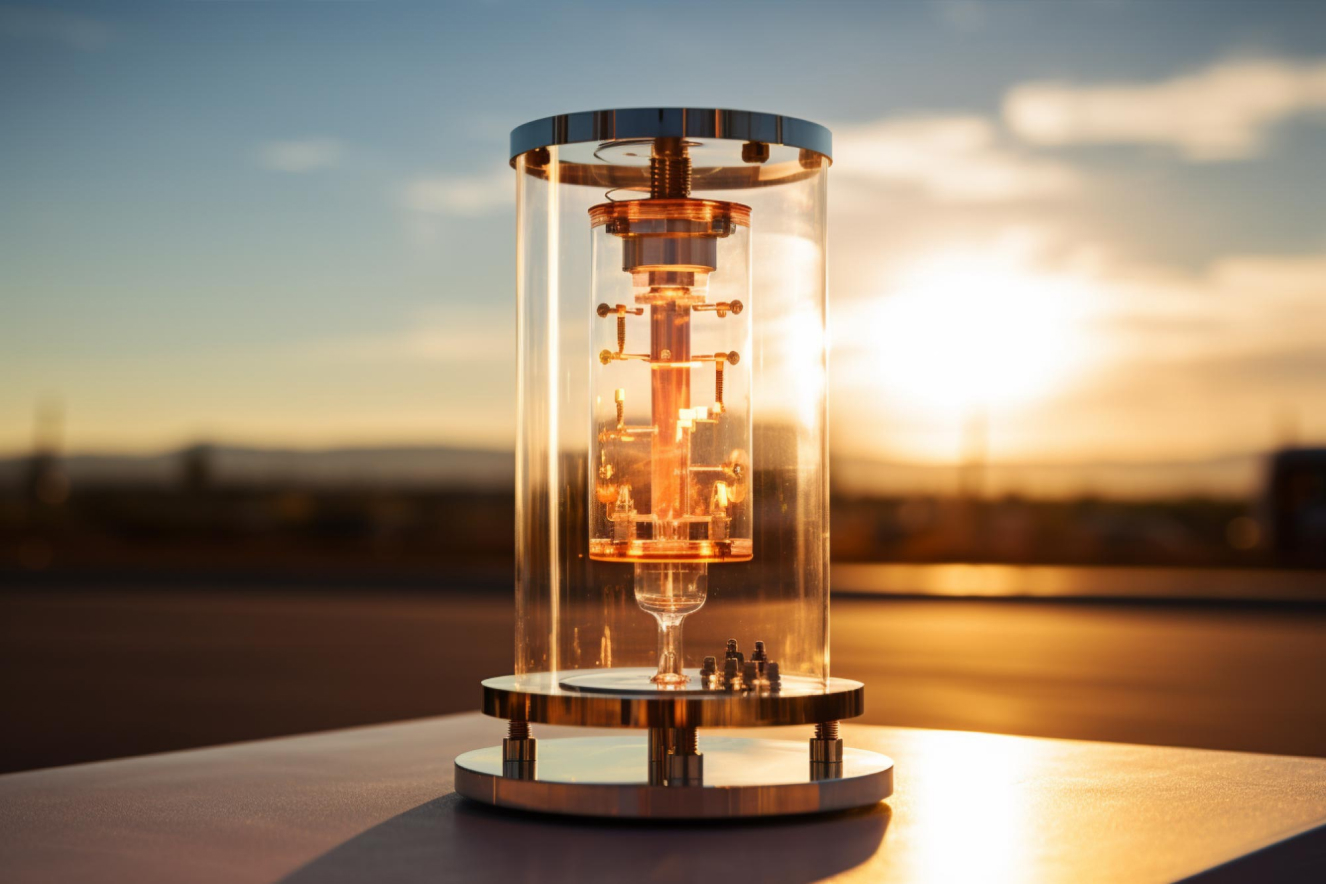Sunlight Transformed into Clean Energy: Revolutionary Solar Hydrogen Device Sets New Record

Rice University engineers have developed a device that can convert sunlight into hydrogen with unprecedented efficiency. The device, a photoelectrochemical cell, incorporates next-gen halide perovskite semiconductors and electrocatalysts. It stands as a potential platform for chemical reactions using solar energy to convert feedstocks into fuels. (Artist’s concept.)
New standard for green hydrogen technology set by Rice U. engineers.
Rice University engineers can turn sunlight into hydrogen with record-breaking efficiency thanks to a device that combines next-generation halide perovskite semiconductors with electrocatalysts in a single, durable, cost-effective and scalable device.
The new technology is a significant step forward for clean energy and could serve as a platform for a wide range of chemical reactions that use solar-harvested electricity to convert feedstocks into fuels.
Aditya Mohite’s lab, specializing in chemical and biomolecular engineering, spearheaded the construction of this integrated photoreactor. A key element in the device’s design is an anticorrosion barrier that effectively insulates the semiconductor from water without impeding electron transfer. As reported in a study published in Nature Communications, the device boasts an impressive 20.8% solar-to-hydrogen conversion efficiency.
A photoreactor developed by Rice University’s Mohite research group and collaborators achieved a 20.8% solar-to-hydrogen conversion efficiency. Credit: Gustavo Raskosky/Rice University
Austin Fehr, a chemical and biomolecular engineering doctoral student and one of the lead authors of the study, emphasized the importance of this work. “Using sunlight as an energy source to manufacture chemicals is one of the largest hurdles to a clean energy economy. Our goal is to build economically feasible platforms that can generate solar-derived fuels. Here, we designed a system that absorbs light and completes electrochemical water-splitting chemistry on its surface.”
The device is known as a photoelectrochemical cell because the absorption of light, its conversion into electricity and the use of the electricity to power a chemical reaction all occur in the same device. Until now, using photoelectrochemical technology to produce green hydrogen was hampered by low efficiencies and the high cost of semiconductors.
Series of four still images from a sample video showing how a photoreactor from Rice University splits water molecules and generates hydrogen when stimulated by simulated sunlight. Credit: Mohite lab/Rice University
Fehr explained the distinction of their invention: “All devices of this type produce green hydrogen using only sunlight and water, but ours is exceptional because it has record-breaking efficiency and it uses a semiconductor that is very cheap.”
The Mohite lab and its collaborators created the device by turning their highly-competitive solar cell into a reactor that could use harvested energy to split water into oxygen and hydrogen. The challenge they had to overcome was that halide perovskites are extremely unstable in water and coatings used to insulate the semiconductors ended up either disrupting their function or damaging them.
Ayush Agrawal (from left), Faiz Mandani and Austin Fehr. Credit: Gustavo Raskosky/Rice University
“Over the last two years, we’ve gone back and forth trying different materials and techniques,” said Michael Wong, a Rice chemical engineer and co-author on the study.
After lengthy trials failed to yield the desired result, the researchers finally came across a winning solution.
“Our key insight was that you needed two layers to the barrier, one to block the water and one to make good electrical contact between the perovskite layers and the protective layer,” Fehr said. “Our results are the highest efficiency for photoelectrochemical cells without solar concentration, and the best overall for those using halide perovskite semiconductors.
Michael Wong is Rice University’s Tina and Sunit Patel Professor in Molecular Nanotechnology, chair and professor of chemical and biomolecular engineering, and a professor of chemistry, materials science and nanotechnology, as well as civil and environmental engineering. Credit: Michael Wong/Rice University
“It is a first for a field that has historically been dominated by prohibitively expensive semiconductors, and may represent a pathway to commercial feasibility for this type of device for the first time ever,” Fehr said.
Aditya Mohite is an associate professor of chemical and biomolecular engineering and the faculty director of the Rice Engineering Initiative for Energy Transition and Sustainability, or REINVENTS. Credit: Aditya Mohite/Rice University
The researchers showed their barrier design worked for different reactions and with different semiconductors, making it applicable across many systems.
“We hope that such systems will serve as a platform for driving a wide range of electrons to fuel-forming reactions using abundant feedstocks with only sunlight as the energy input,” Mohite said.
“With further improvements to stability and scale, this technology could open up the hydrogen economy and change the way humans make things from fossil fuel to solar fuel,” Fehr added.




